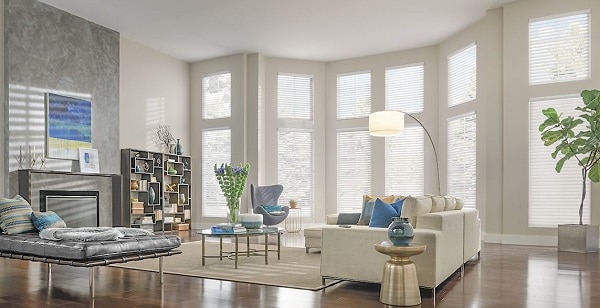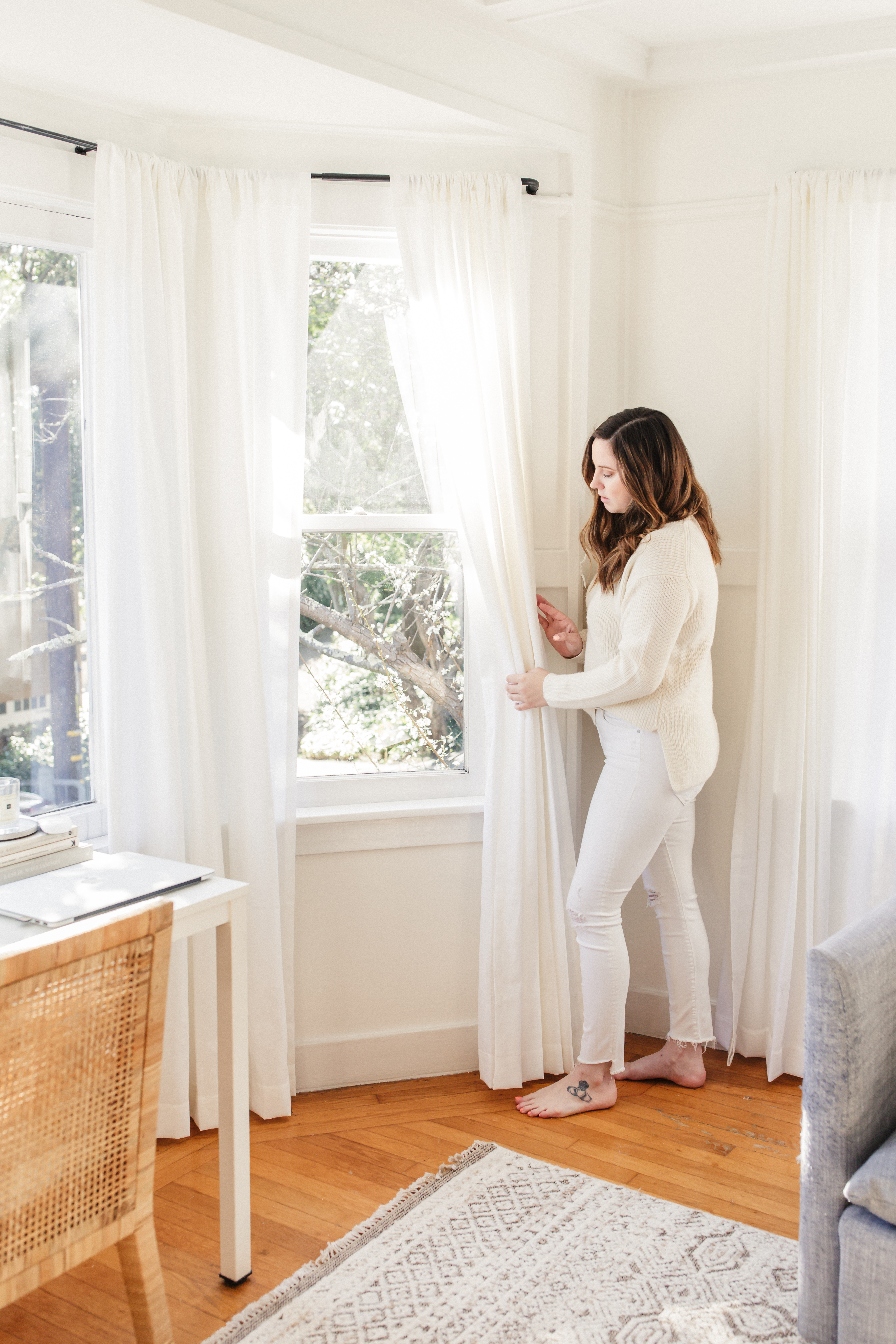The Ultimate Overview to Blinds: Types, Advantages, and Choosing the Right Suitable For You
The globe of window treatments is vast and varied. Blinds are available in many styles, each offering unique advantages for various setups. Comprehending these alternatives is necessary for making notified choices. In addition, aspects like product choice and space functionality play a substantial duty. As one considers the excellent equilibrium in between aesthetics and usefulness, the nuances of gauging and preserving blinds additionally emerge as crucial elements. What should one focus on when picking the suitable home window solution?
Sorts of Blinds: A Detailed Summary
Blinds work as both functional and aesthetic components in interior layout, providing different options to match diverse preferences and needs. Amongst the most preferred kinds are Venetian blinds, defined by straight slats that can be adjusted for light control and personal privacy. Roller blinds, understood for their simpleness and versatility, come in an array of materials and patterns, making them appropriate for standard and contemporary setups. Upright blinds, usually made use of for bigger windows or gliding doors, enable simple adjustment and are typically made from material or plastic.
Roman blinds, with their sophisticated folds, add a touch of sophistication to any space, while mobile tones supply insulation and power performance. Additionally, bamboo blinds use an all-natural, green choice, infusing spaces with warmth. Each type has special functions and styles, ensuring house owners can locate the ideal suitable for their particular design and functional demands.
Advantages of Setting Up Blinds in your house
The installation of blinds in a home uses a number of significant benefits. They offer enhanced personal privacy control, enabling property owners to regulate exposure from the outside. Furthermore, blinds add to energy efficiency by aiding to take care of indoor temperature levels, reducing the dependence on heating and cooling down systems.
Enhanced Personal Privacy Control
Setting up blinds provides a substantial benefit in personal privacy control when homeowners look for to enhance their living rooms. Blinds offer a functional remedy for regulating visibility from both the interior and outside of the home. By readjusting the slats or increasing the blinds, individuals can conveniently manage the amount of light getting in while concurrently blocking the view from outside. This versatility allows house owners to produce a comfortable environment without giving up natural light. Additionally, different styles and products are offered, guaranteeing that home owners can choose choices that effortlessly blend with their decor while boosting privacy. Ultimately, the installment of blinds acts as a reliable ways to secure individual room, motivating relaxation and tranquility of mind within the home setting.
Power Performance Enhancement
Setting up blinds not only improves privacy but likewise considerably adds to power performance in the home. By managing natural light and decreasing heat transfer, blinds can help keep a constant indoor temperature. During warmer months, shutting blinds can shut out extreme sunlight, consequently reducing the reliance on a/c. Alternatively, in cooler months, they can provide insulation by capturing heat, decreasing heating expenses. In addition, energy-efficient blinds, such as cellular shades, are created especially to minimize energy loss. By purchasing top quality blinds, property owners can develop a much more comfy living setting while additionally lowering energy bills. Inevitably, the installation of blinds serves as a useful solution for those seeking to boost both convenience and energy efficiency in their homes.
Exactly how to Select the Right Blinds for each and every Space
Exactly how can one determine the most appropriate blinds for each room in a home? The choice process starts with reviewing the space's objective and environment. For example, in living locations, versatile blinds that permit light control while making certain privacy are suitable. In bedrooms, blackout blinds can improve sleep quality by shutting out outside light.
Bathroom and kitchens need moisture-resistant choices to withstand humidity, making vinyl or artificial wood blinds appropriate selections. In addition, the preferred visual plays a crucial function; coordinating blinds with the space's style boosts the general atmosphere.
Consider the amount of natural light each area gets; lighter blinds may be more suitable for dark rooms, while darker options can add heat to sunlit rooms. Eventually, comprehending particular demands and choices for performance and design will certainly assist property owners in making notified decisions tailored to each area's distinct demands.
Product Options: Timber, Plastic, Material, and More

Timber Blinds Advantages
Timber blinds are a popular selection among property owners seeking a blend of aesthetic appeals and performance. One considerable benefit of wood blinds is their natural beauty, using a warm and welcoming look that boosts any type of indoor design. They are available in numerous coatings and shades, permitting personalization to match personal design. In addition, timber blinds give outstanding light control and personal privacy, as their slats can be quickly gotten used to filter sunshine while keeping seclusion. Their durability is an additional advantage; with correct care, timber blinds can last for several years without shedding their allure (Phoenix custom blinds). They have insulating homes, assisting to control interior temperatures and potentially decreasing energy costs. Generally, wood blinds merge style and usefulness, making them an excellent option for many families
Vinyl Durability Features
Plastic blinds stick out for their exceptional toughness, making them a practical option for numerous settings. These blinds are immune to wetness, making them suitable for areas such as bathrooms and kitchen areas where moisture can be a problem. Unlike timber, plastic does not warp, fracture, or fade under sunlight, ensuring long-lasting efficiency and marginal maintenance. Furthermore, they are available in a variety of colors and styles, enabling property owners to customize their look without compromising longevity. Plastic blinds are also easy to clean; an easy clean with a damp towel is usually adequate to keep them looking fresh. Overall, their strength and low maintenance make vinyl a favored alternative amongst home owners seeking both performance and aesthetic charm.

Fabric Options Review
Blinds come in a range of material alternatives that cater to various visual and practical demands. Typical products include plastic, fabric, and wood, each offering one-of-a-kind advantages. Timber blinds give a classic, cozy aesthetic and exceptional insulation but need upkeep to avoid warping. Plastic blinds are moisture-resistant and resilient, making them ideal for high-humidity areas like bathroom and kitchens. Fabric blinds, readily available in countless colors and patterns, use convenience and gentleness, enhancing home decor while offering varying degrees of light filtration. Additionally, options like artificial timber provide the look of all-natural wood with added longevity. When picking blinds, it is important to examine the details demands of each area to assure peak efficiency and design.
Gauging and Mounting Blinds: Tips for Success
Measuring and mounting blinds might seem uncomplicated, cautious attention to information is important for accomplishing a best fit. Initially, it is necessary to gauge the home window framework properly, noting both the width and height. For inside mounts, subtract a tiny amount from the size to ensure a tidy fit, while outdoors places need to extend beyond the structure for better light control and aesthetics. Making use of a steel measuring tape is advised for accuracy.
When setting up, gather all required devices, such as a level, drill, and screws. Following the maker's directions is vital to guarantee appropriate setup. It is suggested to pre-drill openings to avoid damaging the braces. Furthermore, having a 2nd person can make the process smoother, specifically when raising larger blinds. After setup, test the blinds to verify they run efficiently and change as needed for maximum capability.
Upkeep and Care for Long-Lasting Blinds
Appropriate upkeep and care can greatly prolong the life expectancy of home window coverings. Routine cleaning is important; using a soft towel or a microfiber duster can efficiently remove dust without scratching surface areas. For much deeper cleansing, a mild service of soap and water is advised, used with a soft sponge, assuring that no moisture leaks right into the devices.
For fabric blinds, area cleansing is a good idea, while wood blinds must be treated with a wood-safe cleaner to preserve their surface. Prevent exposing callous too much dampness, warmth, or straight sunshine, which can lead to bending or fading.
In addition, regular examination of mechanisms and cables can stop wear and tear. It's smart to follow supplier standards for certain products, as various blinds might have special treatment requirements. By embracing these basic maintenance methods, homeowners can guarantee their blinds continue to be useful and visually pleasing for several years to find.
Regularly Asked Inquiries
Can Blinds Help In Reducing Energy Costs in My Home?
Blinds can successfully reduce energy prices in a home by offering insulation, obstructing warm throughout summertime, and retaining heat in wintertime. Their capability to manage light and air circulation enhances energy check here efficiency throughout the year.
Exist Child-Safe Options for Blinds?
Yes, there are child-safe options for blinds. These consist of cordless layouts, retractable cables, and security devices that eliminate dangling cables, ensuring a safe and secure setting for children while maintaining capability and visual charm in homes.

How Do Blinds Compare to Shades or curtains?
Blinds commonly use extra accurate light control and space performance than drapes or tones. Phoenix blinds repair. They are typically less complicated to cleanse and preserve, while curtains offer a softer visual, and shades can use differing insulation advantages
Can I Customize the Shade and Style of My Blinds?
Yes, blinds can be tailored in both color and design. Various manufacturers provide a variety of choices, allowing consumers to select materials, patterns, and tones that suit their personal aesthetic and home decor.
What Is the Average Life-span of Various Types of Blinds?
The ordinary life-span of blinds varies: wood blinds last 5-10 years, artificial timber 7-10 years, aluminum 5-10 years, and fabric shades around 5 years, depending upon maintenance, usage, and direct exposure to sunshine.
Shower rooms and kitchens need moisture-resistant options to withstand humidity, making vinyl or artificial wood blinds appropriate selections. Timber blinds provide all-natural appeal and warmth, while plastic supplies longevity and convenience of maintenance. One substantial benefit of wood blinds is their all-natural beauty, supplying a warm and welcoming look that improves any kind of indoor style. Furthermore, wood blinds offer superb light control and personal privacy, as their slats can be quickly readjusted to filter sunshine while keeping seclusion. For material blinds, area cleansing is advisable, while wooden blinds should be treated with a wood-safe cleaner to preserve their finish.